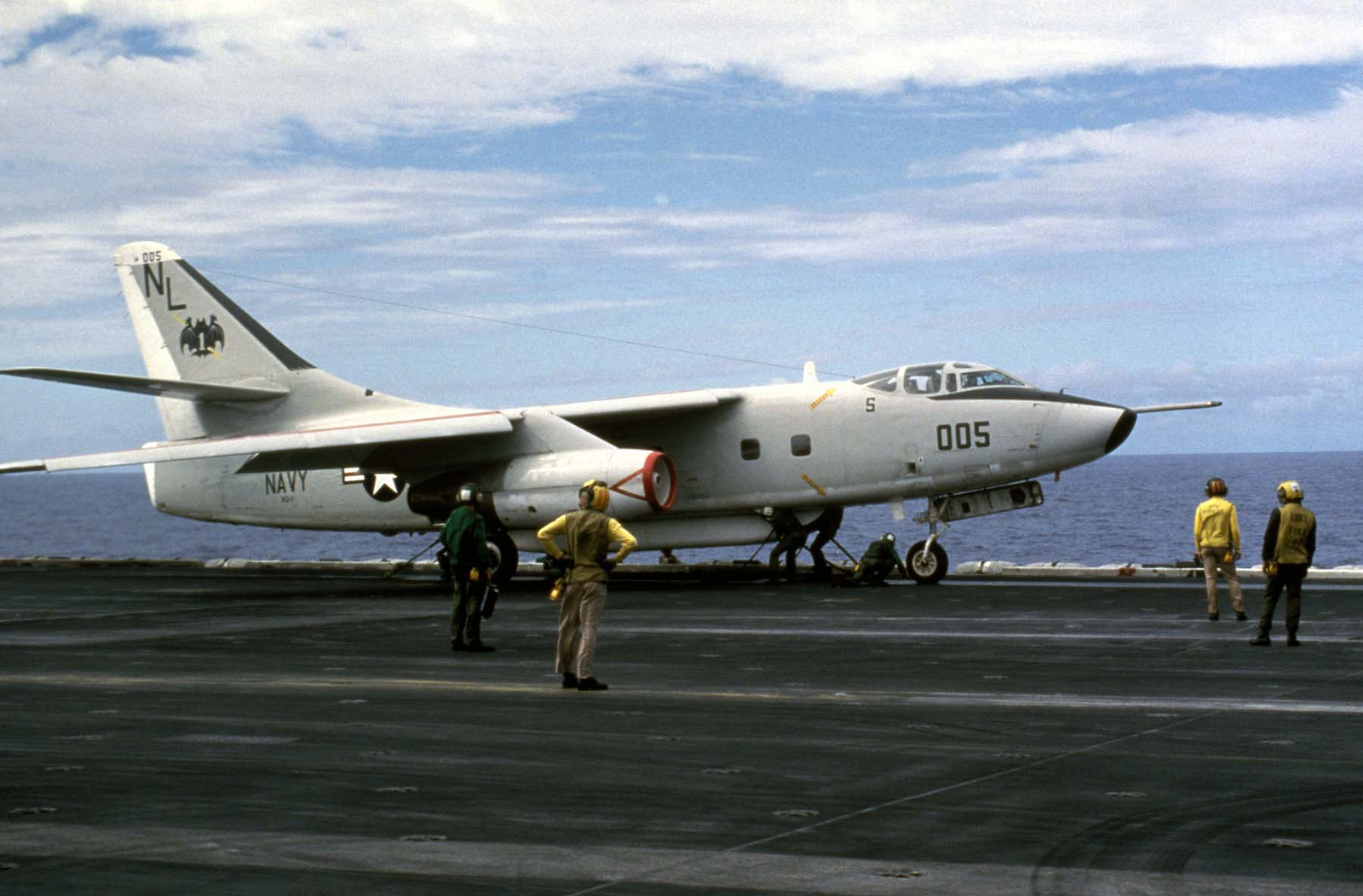
The Douglas A-3 Skywarrior, better known as the “Whale” by those pilots and flight crew members who flew and supported it, is one of the most formidable and flexible planes to ever come aboard U.S. Navy carriers. Conceived in the high-pressure climate of the early Cold War, this massive aircraft was designed to drop nuclear bombs off the deck of aircraft carriers—a virtually impossible task at the time. In doing so, it became the largest carrier-based jet ever flown by the Navy, and one of the longest-serving.

The A-3’s history starts in the post-World War II years, when the Navy required a jet-powered bomber with long range to carry nuclear weapons at sea. Strategic minds recognized that the next war would likely call for attacking deep into the heart of an enemy without dependence on land bases.

Douglas Aircraft Company and master designer Ed Heinemann were tasked with turning this vision into a reality. They needed to reconcile record size and capability with the pragmatics of carrier landings and takeoffs. The aircraft came with a tricycle landing gear—rare for its time—that greatly improved handling on congested decks.

Behind the engine, the Skywarrior utilized two reliable Pratt & Whitney J57 turbojets, noted for their reliability and power. It was powered by these engines to lift payloads of almost 13,000 pounds over distances that exceeded 2,000 miles. Its folding wings mounted high and advanced avionics provided it with the advantage when it came to navigation as well as survivability.

Stretching over 76 feet in length and 72 feet wide in wingspan, the A-3 was a giant among carriers. Fully loaded, it totaled 82,000 pounds—gigantic for carrier operations, and the reason it has its popular nickname.

As it came into service in 1956 with Heavy Attack Squadron One, the Skywarrior’s purpose was purely nuclear deterrence. But as the Navy began to place greater strategic focus on ballistic missile submarines, the A-3 soon became something else altogether. It also found its value in Vietnam, not only as a bomber, but also as a key support aircraft.

Perhaps its most valuable conversion was to the KA-3B aerial tanker, which refueled strike aircraft and fighters to lengthen their range. It is credited by Navy historians with saving hundreds of aircraft and crews during combat missions.

The A-3 also became an expert at electronic warfare and reconnaissance. The EKA-3B could refuel planes while jamming the radar of the enemy, guarding against strike packages going to and from the target. Reconnaissance versions like the RA-3B had cameras and sensors for distant photo and electronic intelligence missions, whereas the EA-3B concentrated on intelligence gathering signals with a crew of seven. These multi-mission aircraft operated both out of carriers as well as land bases, supplementing larger intelligence vehicles.

The Skywarrior’s robust airframe and massive bomb bay made it possible to convert it to nearly any mission the Navy required. It was used as a strategic bomber, a tanker, a jammer, a reconnaissance plane, an aggressor in electronic warfare training missions, and even as a VIP transport. It also saw use as a flying laboratory for developing new avionics and weapons systems.

Even the U.S. Air Force noticed, developing its land-based variant, the B-66 Destroyer. Though it had the same overall design, the B-66 used distinct engines, a new wing, and a reconfigured cockpit to suit Air Force requirements better. It served in Vietnam as a tactical bomber, reconnaissance plane, and electronic warfare platform, escorting strike packages and interfering with enemy defenses.

The A-3 Skywarrior’s active life lasted almost 40 years, from its first flight in 1952 until it retired in 1991. Its last missions were electronic intelligence flights in the Gulf War, which brought to a close the heavy carrier-based jet era in U.S. Navy operations. The Skywarrior’s legacy contributed to the evolution of modern naval aviation tactics, including aerial refueling, electronic warfare, and reconnaissance missions now performed by such high-tech planes as the EA-18G Growler.

Today, a handful of preserved Skywarriors remain standing in museums and memorial parks, silent testaments to a time when carrier aviation was breaking barriers few imagined. More than a bomber, the A-3 demonstrated that one plane could evolve with the shifting needs of war and stay relevant for decades—a testament to ingenuity, expertise, and the crews that brought the “Whale” to life.
